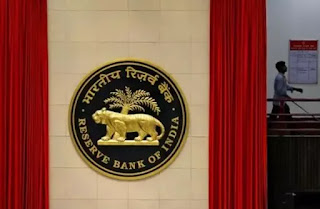रिज़र्व बैंक ने जारी की वित्तीय स्थिरता रिपोर्ट, जुलाई 2020
Financial Stability Report July 2020: The Reserve Bank of India has released the 21st issue of the Financial Stability Report. This refers to the collective assessment of the Financial Stability and Development Council- FSDC related to the Financial Stability Subcommittee and the Financial Stability Risks. This report also discusses the persistence of the financial system in the context of contemporary issues related to the development and regulation of the financial sector.
(भारतीय रिज़र्व बैंक ने वित्तीय स्थिरता रिपोर्ट (Financial Stability Report) का 21 वां अंक जारी किया है। यह वित्तीय स्थिरता की उप-समिति और वित्तीय स्थिरता के जोखिमों से संबंधित विकास परिषद (Financial Stability and Development Council- FSDC) के सामूहिक मूल्यांकन को दर्शाता है। इस रिपोर्ट में वित्तीय क्षेत्र के विकास और विनियमन से संबंधित समसामयिक मुद्दों के संदर्भ में वित्तीय प्रणाली के दृढ़तालेपन पर भी विचार-विमर्श किया गया है।)
Highlights of the Financial Stability Report:
- In response to COVID-19, a combination of fiscal, monetary and regulatory interventions on an unprecedented scale has ensured the normal functioning of financial markets.
- High-leveraged non-financial sector, global geopolitical tensions, and economic losses caused by epidemics are major risks to global economic prospects.
- Actions by financial sector regulators and the government to reduce the impact of COVID-19 reduced operating barriers and helped maintain market integrity and resilience in the face of severe risk aversion.
- Bank lending, which had weakened considerably during the first half of 2019-20, further deteriorated in later periods with diversification of bank groups (moderation).
- The capital to risk-weighted assets ratio-CRAR against the risk-weighted assets of Scheduled Commercial Banks-SCB declined to 14.8 percent in March 2020 as compared to 15.0 percent in September 2019. Their gross non-performing asset – GNPA ratio declined from 9.3 percent to 8.5 percent over the period and the provision coverage ratio-PCR increased from 61.6 percent to 65.4 percent during the period.
- Macro stress tests for credit risk indicate that the GNPA ratio of all SCBs may increase from 8.5 percent in March 2020 to 12.5 percent by March 2021 under baseline conditions; This ratio can increase up to 14.7 percent under extremely severe stress scenarios.
- Network analysis shows that with bilateral contraction in the inter-bank market and better capitalization of public sector banks (PSBs), total bilateral risk between entities in the financial system declined marginally during 2019-20, a year earlier. There will be reduction in infectious losses to the banking system under different scenarios.
- Moving forward, major challenges include epidemic-proofing in a large segment of society, particularly those that do not engage in formal financial intermediation.


Leave a Reply